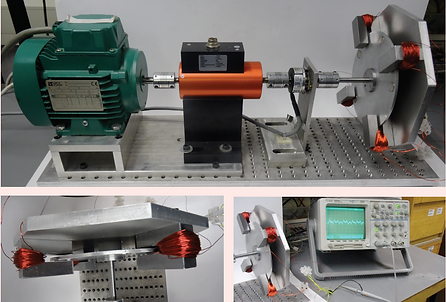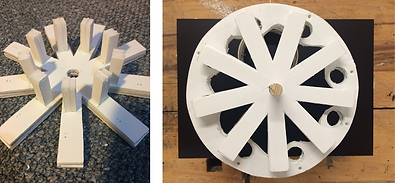2014
2014
2020
PROJECTS
Orbita
For my thesis for the Master in Product Design Engineering I designed an energy harvester, to charge electronic devices on a bicycle and take the energy produced anywhere you want.
2016

Exploded view of the Orbita energy harvester
Technical skills
- electrical engineering
- SolidWorks modelling
- sketching
- product design
- prototyping and manufacturing
- adobe suite
soft skills
- user research
- presentation skills
- resilience

target user and bicycles
Identifying the target user, within the different cycling user groups was important and defining the types of bicycles he/she was most likely to use.
A young professional male was used as the key persona. I explored Road, Touring, Hybrid, Cargo, Mountain bikes, Tracking, BMX and, based on the persona, focused mostly on city bikes and hybrids.
devices
Based on the persona and bicycle, I identified key elements the persona would bring with him and want to charge on-the-go.


sketches and exploration
Sketches from the initial stages of the project, exploring ways of harvesting energy. They led to initial prototypes. Three key directions were explored to harvest energy: wind power, piezoelectricity and electromagnetic.
More detailed and shaded drawings were used when prototypes needed to be more exact, before modelling them into 3D using SolidWorks.

initial iterations
This section covers the two initial ways I had explored to energy harvest on a bicycle: wind and piezoelectric energy. After running initial number and laboratory simulations, it was established that both these directions, were not viable. Wind energy because of aesthetic limitations, piezoelectric because of energy harvest limitations.

electromagnetic energy harvesting
After the negative results of the 2 initial energy harvesting directions, I opted for electromagnetic energy harvesting. Simulating a speed of 12-15km/h (average of a city cyclist), 5W were generated.
This value was higher than the one of a Shimano dynamo hub and of a bottle hub at the same speed. This was thanks to a series of iterations, change in layout and in design.

prototyping
Soft foam was used to understand size and placement with respect to the wheel and explore user interaction.
Hard foam and laser cut models were used for shape analysis and working out the mechanism.
Silicone was used to prototype the removable battery holder.





final working prototype
The prototype was made of mild steel, copper wire and aluminium, with a clear perspex hub body to enclose the generator. The steel and perspex were CNC milled, based off SolidWorks 3D models. The vero board was built and connected in a 3 phase, 6 pole layout. The working prototype was mounted into a wheel and tested.

user experience
Thinking of how the user would interact with the product was consistently taken into consideration, to provide a smooth user experience, based on their commuting habits.


Final key details
• Hub located
• Straight pull spokes
• Regenerative braking
• Use energy on or off the bike
• Removable power bank
• Sensors for control
• Monitor your data
• Usable on all bikes
Bringing the idea forward, iterations on how to reduce the size of the energy harvester would have been made, together with ways for the user to easily mount the harvester on their own.